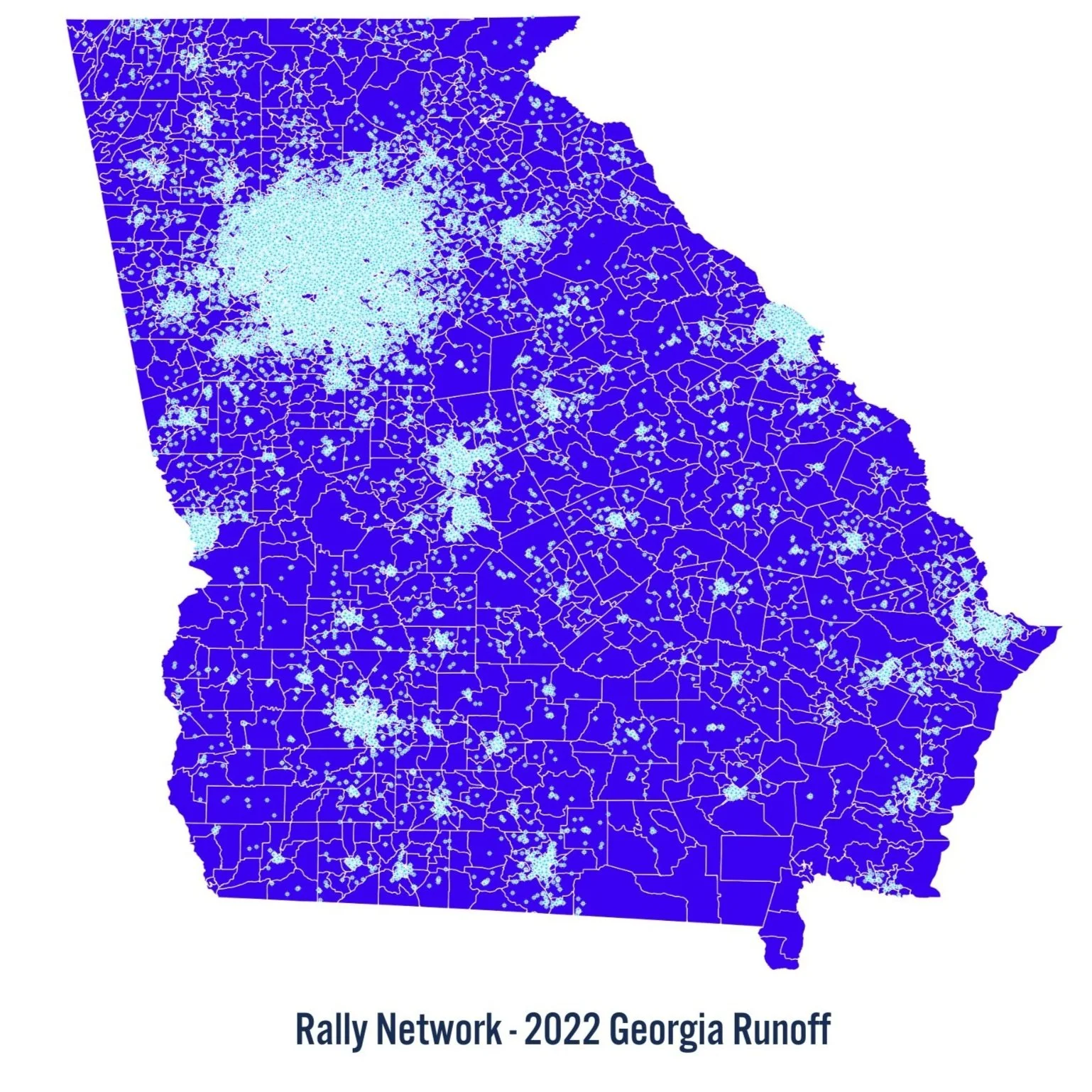the future of organizing is relational.
we need to think differently about how we organize using technology.
Every outreach program today — whether for an election or social issue campaign — starts the same way: with a list of voters (or potential supporters) and a menu of tech-enabled contact methods at varying price-points. The goal is to reach and persuade as many people as possible — as cheaply as possible.
Technology used to be a solution — until it became the problem. Phonecalls and texts are cheap, until answer rates drop and the volume of mass texts means you’re lost in the noise. Voter data means easy contact attempts — unless the data is out-of-date. Disinformation campaigns used technology to spread lies, leading voters to be more distrustful of informaiton they receive from people they don’t know.
However, technology and the pandemic have changed civic engagement over the last decade.
Voters want to be connected, but they don’t want a stranger knocking on their door.
and they’re not all on the same social network anymore. They want to support the issues and candidates they care about, but they want to do it with someone they trust.
Relational mobilization recognizes that the best people to talk to voters are their friends and family — the people who know them best. And when we mobilize voters fast and at scale around a specific shared goal, we can do things that haven’t been done before.
Mis- and dis-information
Trusted messengers are more important than ever.
Data integrity
Campaigns typically buy voter lists
Decrease in contact responses
People answer calls from people they know.
Volunteer experience
The pandemic changed organizing forever: campaigns had to rely on contact that wasn’t in-person, while trust in institutions was at an all-time low.
Innovative campaigns like Pete for America, Sri Kulkarni for Congress and Ed Markey for Senate ran creative, relational-first programs that showed how relational could be used effectively on electoral campaigns. (Mother Jones, The Great Battlefield, Medium)
relational timeline
Organizing has a long, rich history in US labor, political and social movements.
The impact of technology on how we communicate drastically changed how we organize.
2021
2018
2020
Relational program was proven to run at scale with the Jon Ossoff for Senator runoff campaign. (Politico)
2022
2024
Relentless proved that a relational program — at scale — can be set up in less than a week. (Axios)
The first relational program for a presidential nominee.
Facebook removed access to users’ Friends for third party apps.
Technology made it possible to scale outreach efforts using phone banking, and became an important part of campaign strategy. (Learn more.)
Early 2000s
2007
Phone banking wasn’t reaching young voters, who didn’t have listed phone numbers and used apps to communicate with one another.
The Obama campaign built an app that gave access to their users’ connections on Facebook’s social map, using a Facebook API. (TIME)
Case study: GA 2022
Program objective: Increase voter turnout for Sen. Warnock in the 2022 GA runoff election.
Program set up in 5 days.
Over 10 days, mobilizers built a relational network of 70,000 voters — spanning 96% of counties and 94% of precincts across the state — of which:
92% matched to the voter file
23% had not voted in the 2020 general
72% made a vote plan.
Impact:
3,000 voters in the relational network voted in the runoff election, despite not having voted in the general election one month earlier.
FAQs
what is mobilization?
Mobilization is a coordinated effort — at scale — to take a single action.
People can be mobilized to take actions such as voting, donating, or sharing info about issues that matter to them.
who is a mobilizer?
Mobilizers are people who activate others to do something.
In everyday life, they’re the person in your friend group who always manages to get everyone together for dinner. In organizing, they’re the person who sends texts reminding others that it’s Election Day and to get to the polls.
Is mobilization only for electoral campaigns?
No. Mobilization is also effective for social issue campaigns that want people to take an action, such as requesting to speak at a legislature, contacting representatives, or countering disinformation.
What is “relational”?
Relational just describes something where there is a relationship, such as between friends or family members.
Relational mobilization is where the mobilizer is only contacting people they already have a relationship with, because we know those conversations are more powerful.
was this the program used by the Ossoff campaiGn?
Davis Leonard (CEO) and Zoe Stein (Chief of People and Program) developed the first iteration of this strategy on the Ossoff Campaign, which they wrote about here.
is this paid relational?
“Paid relational” is used to describe relational outreach where the mobilizer is paid for their work, as opposed to being an unpaid volunteer. Some mobilizers are working two or three jobs to make ends meet, and compensating them for their time enables them to participate so their voice is heard.
